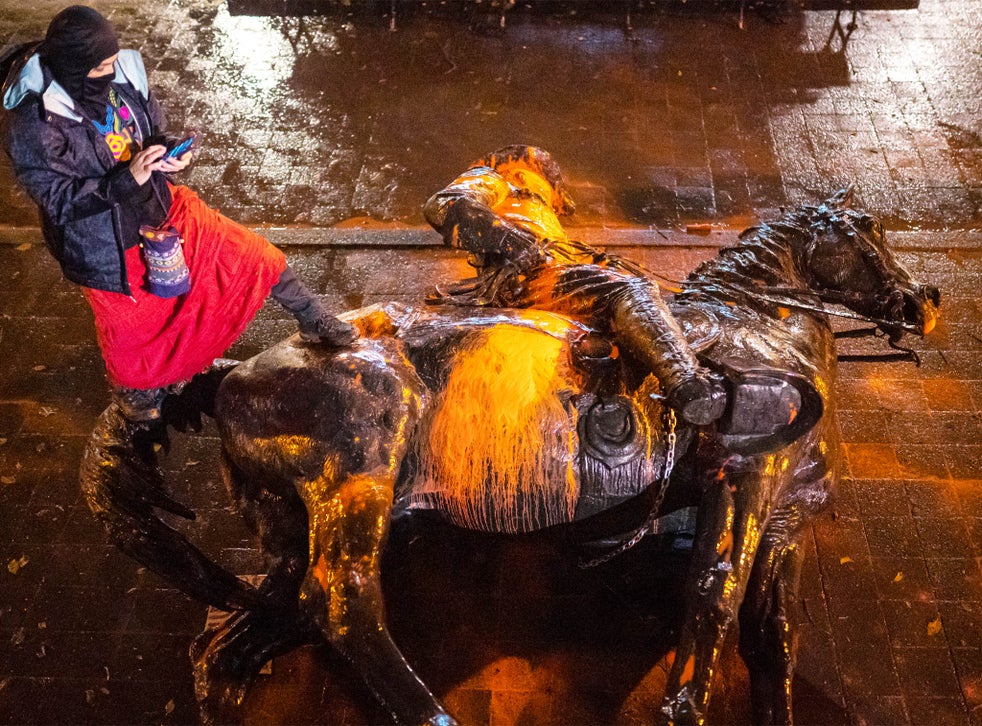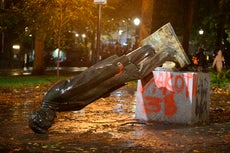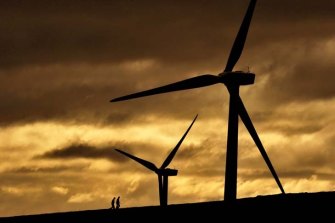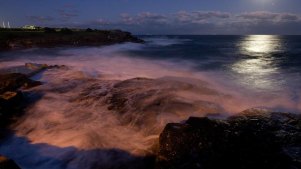Fredericton shooter's computer shows focus shifting from video games to anti-Muslim sentiment
Hadeel Ibrahim · CBC News · Posted: Oct 14, 2020

Matthew Raymond's defence team is painting an image of a man losing interest in biking and video games, and instead seeking information on ISIS, anti-Muslim sentiment, demons and the occult.
Raymond. 50, is facing four counts of first degree murder after he shot and killed Donnie Robichaud and Bobbie Lee Wright, then Fredericton constables Sara Burns and Robb Costello when they responded to a report of shots fired at 237 Brookside Dr. on Aug. 10, 2018.
Raymond has admitted to the shooting but pleaded not guilty. His lawyers are arguing he was not criminally responsible because of a mental illness.

The Crown and defence have agreed Raymond was mentally ill at the time of the killing, leaving the defence with the burden to prove his mental illness prevented him from knowing what he was doing, or knowing what he did was wrong.
A digital timeline
Alex Pate, a member of the defence team, testified he reviewed tens of thousands of photos and videos on Raymond's hard drives, spanning from 2015 to 2018.
In 2015 the vast majority of the files were related to video games and mountain biking, he said. There were also some videos of Raymond with his family or with a group of people.
The year 2016 was largely the same.
Police ask 'why' in Raymond interrogation, but get little in response
Crown concedes man had mental disorder when he shot 4 people in Fredericton
In March of 2017 the data shifted focus to the terrorist organization ISIS and some of the "atrocities" they were committing in the Middle East, Pate said. This focus persisted until August of 2017, when Pate said the content became more focused on occult numbers, demons and serpents.
Pate said he found quite a few "extremely graphic" and "brutal" images and videos related to ISIS on Raymond's hard drives. In March of 2017 alone, there were about 10 "extremely violent" videos, Pate said, and somewhere between 10 and 20 images.
In 2017, materials also included references to Prime Minister Justin Trudeau. He found comments written on images of Trudeau that say he was responsible for "mass immigration," and the loss of Canadian values, Pate said.
In early 2017 the data also began leaning toward anti-Islam and anti-Muslim-immigration, Pate said.
The jury was shown a video by Fredericton blogger Charles LeBlanc from June of 2017. In it, Raymond was protesting the recently passed motion known as M-103, which calls for a national action plan against racism, including Islamophobia. He wore a sandwich board that read "No Sharia-law."
LeBlanc confronted Raymond and asked him if he's mentally ill. Raymond said no. Raymond said he gets his news from "the internet."
"They talk about the borders and stuff. And they talk about it on Rebel Media."
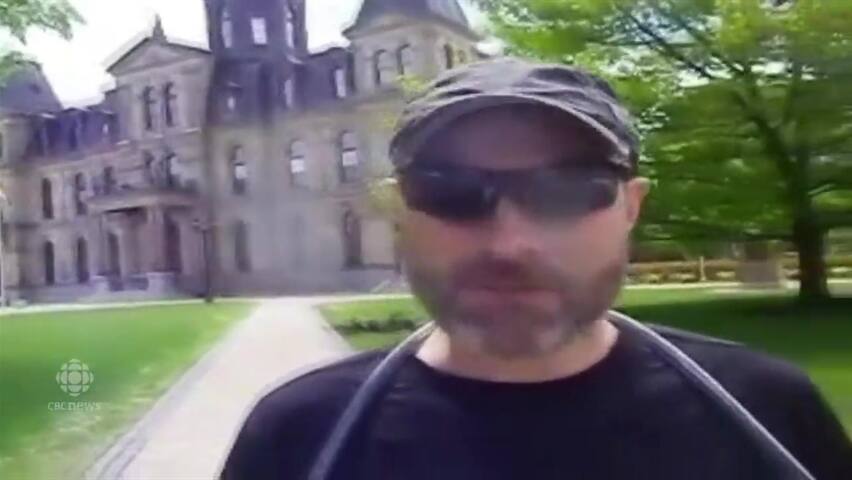
Blogger videotaped alleged Fredericton shooter
2 years ago Last year, Fredericton blogger Charles LeBlanc videotaped the man accused in August of killing four people in Fredericton. 1:49
Pate testified the first video from a YouTube conspiracy theorist who identifies himself as Rob Lee was saved in May 2017, before this encounter. The video included material about Muslim immigration and ISIS, he said.
In the Charles LeBlanc video Raymond spoke about how Muslims are going to change Canadian society for the worse, and that there are "boatloads of them."
Pate testifies this is a similar message to the Rob Lee video from May.
From skating videos to ISIS conspiracies
The jury was shown multiple videos taken by Raymond. From 2015, some were of a family holiday dinner, another was of a skating outing.
Jumping to 2017, the jury was shown videos from a YouTube channel. The name of it is under a publication ban imposed by Justice Larry Landry. Pate testified some of the videos uploaded to the channel could be made by Raymond himself.
The first video on the channel, posted in March of 2017, has references to Trudeau speaking at a Muslim event and participating in a prayer. The five-minute-long video ends with ISIS-related photos, some graphic, and a clip of Trudeau saying he will not support a war in Iraq.
The final frame is a closeup of Trudeau's face with text that reads "Justin Trudeau is dangerous."
Pate said he also found this video on Raymond's computer, and not just posted on the channel.
Justice Landry told the jury Tuesday this trial is expected to continue until the end of the month. The defence intends to call six witnesses.
Hundreds of satanic, conspiracy photos followed Islamophobic material on killer's computer
Matthew Raymond is facing four counts of first-degree murder
Hadeel Ibrahim · CBC News · Posted: Oct 15, 2020
For one video, Raymond focused the camera on a line of vapour among the clouds.
"That's weird," he said from behind the camera.
In painstaking detail this week, Matthew Raymond's defence lawyer has gone through hundreds of photos and videos with satanic, transphobic and conspiracy references found on Raymond's computer, including a "chemtrail" conspiracy theory which posits an unknown, organized entity is poisoning the air.
Raymond shot and killed Donnie Robichaud and Bobbie Lee Wright, then Fredericton constables Sara Burns and Robb Costello when they responded to a call of shots fired at 237 Brookside Dr. on Aug. 10, 2018.
The 50-year-old has admitted to the killing, but pleaded not guilty. His defence lawyers are arguing he was not criminally responsible on account of mental illness.
From anti-Muslim to satanic materials
Alex Pate, who reviewed evidence for the defence team, began testifying last week about what he found on Raymond's hard drives.
On Thursday, Pate said that in the summer months closer to the day Raymond shot and killed four people, he stopped downloading conspiracy theory videos.
Instead, Pate found GoPro and cellphone videos of the sky, and screen recordings of someone using an electronic tool such as Microsoft Paint to make markings on YouTube pages, and doing numerical calculations with occult numbers such as 66 and 33.
Pate's testimony paints a picture of a man whose interest in biking and video games waned as he started viewing and downloading more and more anti-Muslim, anti-Justin Trudeau, demonic and occult data.

In 2017 Raymond started becoming interested in ISIS and anti-Muslim material, data shows. That interest translated to the real world in June of 2017, when he protested an anti-Islamophobia bill outside the New Brunswick legislature, wearing a sandwich board that read "No Sharia-law."
But the court was shown Thursday as the year went on, Raymond's interests moved further into the conspiracy world, touching on flat earth, Illuminati and satanic references somehow related to Disney and other pop culture giants.
This was presented in the form of "countless" images of celebrities or politicians saved on his computer, with titles such as "evil" and "devil," Pate said, and deriving satanic meaning from the shapes of their hands or the look of their eyes.
He also identified multiple famous people as transgender, and related transgender people to the devil.
One video downloaded on Raymond's computer says Hollywood is run by "anti-Christ" demons and "occultists."
The data on his computer started shifting, and increasing in numbers, by the spring of 2017, Pate testified. The "demon" references continued until the summer of 2018, just before the shooting.
Pate also testified a YouTube channel, the name of which is under a publication ban, had videos that appeared to be made by Raymond.
Last week the Crown and defence agreed Raymond had a mental illness at the time of the shooting. This means to get a not-guilty verdict, the defence must prove to the jury, on a balance of probabilities, that Raymond's mental illness either stopped him from knowing the nature and consequences of his actions, or knowing what he was doing was wrong.
Fredericton shooter communicated with YouTube 'conspiracy theorist' and tried to expose 'demons' online
Cpl. Aaron Gallagher testified he recovered thousands of images and videos from Matthew Raymond's devices
Hadeel Ibrahim · CBC News · Posted: Oct 06, 2020 9
Matthew Raymond's murder trial heard Tuesday that he started communicating with a YouTube conspiracy theorist by email and was exposing followers of the channel as "demons."
Crown witness Cpl. Aaron Gallagher continued testimony under cross-examination in the quadruple murder trial in Fredericton.
Gallagher testified Monday that he recovered thousands of images and videos from Raymond's devices after he shot and killed Donnie Robichaud, Bobbie Lee Wright and Fredericton constables Robb Costello and Sara Burns on Aug. 10, 2018.
Raymond, 50, has admitted to being the shooter but pleaded not guilty. His defence lawyers are arguing he was not criminally responsible for the crime on account of a mental illness.
Nurse testifies Raymond thought someone was in his room, was 'agitated' day after shooting
Gallagher told the court earlier that he found videos of Raymond firing a shotgun at a target in the woods and complaining of noise in his apartment, as well as "conspiracy theory" videos and images.
Gallagher testified he couldn't agree that Raymond went out in public and exposed or pointed out demons, but he would agree that Raymond did that on the internet.
Court was shown images of people Raymond found online. The images had titles that included the word "evil eyes" and "snake tongue" and showed dots under their eyes or around their mouth.
The court was also shown a one-hour-long video made by a YouTube conspiracy theorist who identifies himself as Rob Lee. The video begins with the narrator denying space exists.
"If Real, why use CGI?" one caption says about images of a constellation.
Near the end of the video the narrator says fallen angels and demons are on earth, and they "aren't like us."
"It may be a politician … It may even be the woman down the street."
The video narrator identified pop-culture icons and politicians as demons, including former U.S. President Barack Obama and actor David Duchovny, by pointing at their eyes or tongues.
"These serpents and monsters are everywhere and they are out to deceive you," the narrator says in the video. "Trying to destroy you and your family."
The narrator also says the "flood of people" and immigrants are brought on by the devil.
Exchanges with a 'conspiracy theorist'
A 33-page document of email exchanges showed conversations between Raymond and Rob Lee, Gallagher testified. In November 2017 Rob Lee asked Raymond to question someone about the occult symbols in a picture of theirs.
Rob Lee also said, "I'm aware that serpents, shills and fake Christians are on my channel ... I look forward to this list, I can not wait."
The document shows Raymond sending Rob Lee a list of usernames and names. Justice Larry Landry has imposed a publication ban on any names or usernames used on social media and YouTube, aside from Rob Lee's.
Nurses testify Matthew Raymond was 'calm,' 'polite' days after shooting
Defence lawyer Nathan Gorham presented to Gallagher a narrative of the relationship between Rob Lee and Raymond deteriorating.
A screenshot from Feb 8, 2018, had writing added in blue: "Rob Lee has back tracked against what it's all about. Showing people to be aware of demons protects them."
Another screenshot shows Raymond had written in blue under a YouTube comment by Rob Lee: "Oh really ... Can you tell a demon from a pic ANYMORE?"

After prompting from Gorham, Gallagher testified that "it appears that [Raymond] was trying to determine who would be a demon or not on the internet," but he "can't tell if he's doing it for Rob Lee or contesting Rob Lee."
Screenshots also show Raymond accusing another YouTube user of being a demon. Following that, Rob Lee sent an email to Raymond, saying "You are seeing demons every place man."
"You dove on that girls after I had said she's welcome in the channel."
In response, Raymond says, "I know they are all over as I have seen them," and calls him a "liar" and "hypocrite."
The court also saw two videos of Raymond at 237 Brookside Dr. He spoke to two people who were standing in a moving truck, and he put his arm around a boy who appears to be in his teens and smiled.
The trial will continue Thursday after a one-day break on Wednesday because one of the lawyers has a prior engagement.
Tech expert found conspiracy-theory, noise complaint videos in Fredericton shooter's hard drives
Matthew Raymond had custom-built computer with four hard drives containing thousands of images and videos
A technology crimes expert who looked at Matthew Raymond's personal devices found conspiracy theory videos and images, and videos of Raymond firing a shotgun and complaining about noise at his Fredericton apartment complex.
RCMP Cpl. Aaron Gallagher testified for the Crown on Monday that he examined thousands of photos and videos found on Raymond's computer, GoPro camera and an external hard drive.
Raymond, 50, has admitted to shooting Bobbie Lee Wright and Donnie Robichaud, then Fredericton police constables Sara Burns and Robb Costello at 237 Brookside Dr. in Fredericton on Aug. 10, 2018.
He has pleaded not guilty to four counts of first-degree murder, and his defence lawyers are arguing he was not criminally responsible for the crime on account of a mental illness.
Gallagher testified he also found pornography, and videos of Raymond biking around downtown Fredericton.
On one hard drive, Gallagher testified he found 500 images and 400 videos. About 430 images were in relation to a conspiracy website, where Raymond was taking screen captures and "doing numerology" using numbers such as 33 and 666.
The jury watched a 30-minute conspiracy-theory video introduced by the defence.
The video on YouTube says demons communicate using numbers such as 33, 666 and 36. The narrator in the video explains how demons are "casting a spell" on people by using symbolism in Disney movies, social media, celebrity music videos and video games. The video also makes reference to "Masonic" symbolism and the Las Vegas shooting.
The court heard Raymond has done mathematical calculations using these "demonic" numbers in hundreds of screenshots as well physical notes found in his apartment.
Gallagher testified this video was downloaded onto Raymond's computer in October 2017. He agreed with the defence that Raymond's calculations began after the video was downloaded, and that it continued into 2018.
Gallagher testified Raymond stopped using the computer on Aug. 4, 2018, six days before the shooting.
Gallagher also testified the creator of the video had emailed back-and-forth with Raymond, where Raymond complained to him about seeing "D"s and also boasted about his accurate shooting abilities.
'The kick is unreal'
Gallagher also testified he found multiple videos of Raymond firing a shotgun in the woods. Gallagher said Raymond tied the gun to his bicycle with a garbage bag.
One video shows Raymond wearing a hat, dark sunglasses, a black, long-sleeve T-shirt under a grey short-sleeve, talking to the camera. He props up a target paper onto a bush and takes three shots, then reacts to the kick-back of the ammunition.
"Wow, wow, wow," he says, looking at the camera. "This ammo is insane. What the heck? The kick is unreal. It wasn't supposed to have that much kick."

Gallagher said Raymond's computer was custom built and could not have been bought "off the shelf." He said within that computer he found and examined four hard drives.
He found a total of about 200,000 images and videos but said most of those were images downloaded by software so they would function properly. It's not clear exactly how many images or videos were downloaded by the user and how many came with the software.
One hard drive had adult pornography, Gallagher said.
Another hard drive had more than 3,000 videos. He said some of these were videos taken by Raymond in June and July of 2018, including some of him "using a shotgun" in the woods. Two were of Raymond in his apartment complaining about noise in the building.
The last hard drive had a total of 130,000 pictures and 2,600 videos. A lot of the user-generated content were GoPro videos of biking and nature.
The Crown is expected to wrap up its case this week, after calling 38 witnesses.
The court has heard from 14 police officers, eight residents of the apartment complex, a firearms expert, and seven nurses who treated Raymond at the Dr. Everett Chalmers Hospital. A resident of a neighbouring building, the owner of a coffee shop where Raymond was a regular and a paramedic have also testified.
Hadeel Ibrahim is a CBC reporter based in Saint John.












